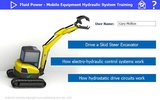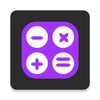Discover the capabilities of Mobile Hydraulic, an innovative app designed to help you learn and explore hydraulic systems in a safe and interactive environment. This educational tool provides detailed insights into fluid power operations, giving you the opportunity to operate virtual hydraulic excavators while diagnosing and maintaining their systems. Its primary focus lies in ensuring effective learning through experimentation, allowing you to utilize controls like drive, boom, and slew, while exploring essential components and their functionality.
Comprehensive Learning for Hydraulic Systems
Mobile Hydraulic offers a practical approach to understanding complex hydraulic processes. With its detailed hydrostatic drive circuit and exercises, you can master maintenance routines and develop diagnostic skills for addressing common hydraulic faults. The app covers essential areas, including contamination management, circuit construction, and the identification of potential risks, enhancing your knowledge of hydraulic mechanisms.
Hands-On Training for Real-World Applications
Mobile Hydraulic enables you to virtually operate skid steer loader controls and delve into the functionality of electro-hydraulic systems, closed-circuit drive systems, and proportional lift cylinders. Moreover, it equips you with the ability to identify failure points, leakage risks, and heating sources, ensuring a thorough understanding of system vulnerabilities and maintenance practices.
Practical Knowledge and Skill Development
This app empowers users to build, test, and maintain hydrostatic circuits while setting up and commissioning hydraulic equipment. You can diagnose performance issues such as noisy operations or slow drive responses, allowing you to refine your practical skills further. Mobile Hydraulic serves as a comprehensive learning tool for mastering hydraulic systems and maximizing operational efficiency.
Requirements (Latest version)
- Android 5.0 or higher required

























Comments
There are no opinions about Mobile Hydraulic yet. Be the first! Comment